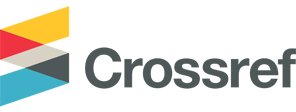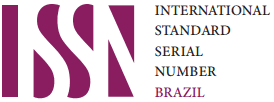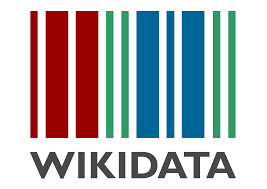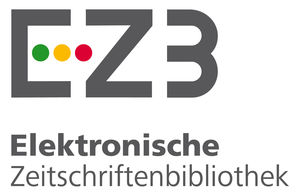Engenharia Didática de Formação (EDF): sobre o ensino dos Números (Generalizados) de Catalan (NGC)<br>Didactical Engineering: about the teaching of generalized Catalan numbers
DOI:
https://doi.org/10.23925/1983-3156.2018v20i2p47-83Palavras-chave:
Número de Catalan, História da Matemática, Engenharia de Formação, Ensino.Resumo
Registramos uma considerável atenção dedicada por parte dos autores de livros de História da Matemática (HM) concernentemente aos clássicos fundamentos do Cálculo Diferencial e Integral. Por outro lado, se mostra imprescindível ao entendimento do professor de Matemática uma compreensão sobre um irrefreável processo matemático e epistemológico evolutivo dos objetos matemáticos, desde seu estádio de nascedouro até o momento atual. Assim, o presente trabalho relata uma Engenharia Didática de Formação (EDF) desenvolvida com a participação de cinco professores em formação inicial, no Instituto Federal de Educação, Ciência e Tecnologia – IFCE, no ano de 2017. O tema abordado envolveu a noção de Números Generalizados de Catalan (NGC) que representa uma contribuição de vários matemáticos e a pesquisa atual sobre inúmeros problemas derivados confirmam seu processo de generalização ininterrupto. O estudo envolveu cinco tarefas e duas situações estruturadas de ensino, com o aporte da Teoria das Situações Didáticas (TSD). Os dados coligidos evidenciam várias propriedades e, sobretudo, teoremas e definições matemáticas descobertas e formuladas pelos sujeitos participantes da investigação o que concorreu para o incremento de suas habilidades profissionais e um conhecimento histórico, epistêmico e pragmático sobre a noção.
We have recorded considerable attention on the part of the authors of Mathematical History (MH) books concerning the classical fundamentals of Differential and Integral Calculus. On the other hand, it is essential to the understanding of the Mathematics teacher an understanding about an unstoppable mathematical and evolutionary epistemological process of the mathematical objects, from its nascent stage to the present moment. Thus, the present work reports a Training Didactic Engineering (EDF) developed with the participation of five teachers in initial formation, in the Federal Institute of Education, Science and Technology - IFCE, in the year 2017. The topic covered involved the notion of Numbers Generalized Catalan (NGC) that represents a contribution of several mathematicians and the current research on numerous derived problems confirm its process of uninterrupted generalization. The study involved five tasks and two structured teaching situations, with the contribution of the Theory of Educational Situations (TSD). The collected data show several properties and, above all, the theorems and mathematical definitions discovered and formulated by the subjects participating in the research, which contributed to the increase of their professional skills and a historical, epistemic and pragmatic knowledge about the notion.
Referências
ALMOULOUD, Ag Saddo. Fundamentos da Didática da Matemática. São Paulo: Editora UFPR, 2007.
ALMOULOUD, Ag Saddo; SILVA, M. J. F. Engenharia didática: evolução e diversidade. Revemat. Florianópolis. v. 7, n. 2, p. 22-52, 2012.
ALVES, F, R. V. Didática da Matemática: seus pressupostos de ordem epistemológica, metodológica e cognitive. Interfaces da Educação. v. 7, nº 21, 131 – 150. 2016.
ALVES, F, R. V. Fórmula de Moivre, ou de Binnet ou de Lamé: demonstrações e generalidades sobre a sequencia generalized de Fibonacci. Revista Brasileira de História da Matemática. v. 17, nº 33, 1 – 16, 2017a.
ALVES, F. R. V. Engenharia Didática sobre a noção de Sequência Generalizada de Jacobsthal. Revista Union Iberoamericana de Matemática. Nº 51, 83 – 106. 2017b.
ALLEN, Emily. (2014). Combinatorial Interpretations Of Generalizations Of Catalan Numbers And Ballot Numbers. (Thesis in Mathematics and Science). Pittsburgh: Pittsburgh University.
ANDREWS, George. (1971). Number Theory. New York: West Washington Square.
ARTIGUE, Michelle. Ingénierie Didactiques. BRUN, J. (org.). Didactiques de Mathématiques, 243 – 264. LAGRANGE J.B. & al. (eds). Jun, Reims, France. 1995.
ARTIGUE, Michelle. Modélisation et Reproductibilité en Didactiques de Mathématiques. Les Cahiers Rouge des Didactiques des Mathematiques, v. 8, nº1, p. 1 – 38, 1984.
BARCUTTI, E.; VERRY, M. C. Some more properties of Catalan numbers. Dicrete Mathematics. nº 102, 229 – 237, 1991.
BERNHART, F. R. (1999). Catalan, Motzkin, and Riordan numbers. Discrete Mathematics. v. 4, nº 4, p. 73 – 112. Disponível em: http://users.dimi.uniud.it/~giacomo.dellariccia/Glossary/Catalan/Bernhart1999.pdf
BILU, Y. F.; BUGEAUD, Y; MIGNOTTE. M. The problem of Catalan. New York: Springer, 2010.
BOBROWSKI, Jacob. Generalized Catalan Numbers and Some Divisibility Properties. (Master in Science). Nevada: University of Nevada, 2015.
BRASIL JUNIOR, N. G. Bijeções envolvendo os Números de Catalan. (Dissertação de Matemática. Estatistica e Computação). Campinas: UNICAMP, 2014.
BROUSSEAU, G. Théorisation des phénomènes d´enseignement des Mathématiques (these de doctorat). Bourdeaux: Université Bourdeaux I, 1986. 905f.
BUESCU. Jorge. Os incríveis números de Catalan. Ingenium. 91 – 95. 2010. Disponível em: http://nda.tecnico.ulisboa.pt/files/sites/40/Os-incriveis-numeros-de-Catalan-ingenium-93-2010.pdf
BOYER, Carl. A History of Mathematics. London: Wiley and Sons, 1968.
BROUSSEAU, Guy. Le contrat didactique: le milieau. Recherche en Didactiques des Mathématiques. v. 9, nº 3, 309 – 336. 1988. Disponível em: http://guy-brousseau.com/wp-content/uploads/2012/02/contrat-milieu1.pdf
CAMPBELL. Douglas. M. The Computation of Catalan Numbers. Mathematics Magazine, v. 57, No. 4 (Sep., 1984), 195-208. 1984. Disponível em: http://www.jstor.org/stable/pdf/2689673.pdf?refreqid=search%3Af334a92a758df808910f31b230e73395
CATALAN, E. Sur les nombre de Segner. Circolo Matematico di Palermo. Itália. 1886. Disponível em: https://orbi.uliege.be/handle/2268/207766
CHEVALLARD, Y. La transposition didactique. Paris: presses universitaires. 1991.
CHEVALLARD, Y.& JOHSUA, M.A. (1982). Un exemple d'analyse de la transposition didactique. Recherches en didactique des mathématiques. Vol 3.2
CHUNNING, Xu. Some interger properties of generalized catalan numbers. Buletin Sinica. v. 22, nº 12, 66 – 74. 2016. Disponível em: http://web.math.sinica.edu.tw/math_media/d402/40208.pdf
DEVELAY, Michel. Pour une épistémologie des savoirs scolaires. Pédagogie Collegialle. v. 7, nº 1, 35 – 40. 1993. Disponível em: http://aqpc.qc.ca/sites/default/files/revue/develay_07_1.pdf
DOUADY, Régine. La ingeniería didáctica y la evolución de su relación con el conocimiento. Gomez, P. (org.) Ingenieria Didactica en Educación Matemática. Bogotá: Grupo Editorial Iberoamericano, 1 – 7, 1995.
EVES, Howard. An introduction to History of Mathematics. New York: Holt, Rinehart and Winston, 1976.
GESSEL, I. E. Super ballot numbers. Journal of Symbolic Mathematics. 179 – 194. 1992. disponível em: http://citeseerx.ist.psu.edu/viewdoc/summary?doi=10.1.1.86.4040
GESSEL, I. E.; Xin, G. A combinatorial interpretation of the numbers. 2(3), 1 – 20. 2004. Disponível em: https://arxiv.org/pdf/math/0401300.pdf
GRAHAM, R, L; Knuth, D. E.; Pastashnki, O. Concrete Mathematics. Second edition. California: Addison & Wesley Publshers, 1988.
GRIMALDI, Raph. P. Fibonacci and Catalan Numbers. New Jersey: Wiley & Sons Publications, 2012.
GUIMARÃES, H. L. A. O passeio de Catalan na Praia e as gramissianas de retas. (dissertação de mestrado). Recife: UFPE, 2012.
HURTADO, F.; NOY, M. Graph of triangulations of a convex polygon and tree of triangulations. Computational Geometry, v. 13, 179–188, 1999. Disponível em: https://pdfs.semanticscholar.org/15b6/a9de791dcf14a4f5276577c336dfd799ee0b.pdf
HURTADO, F.; NOY, M. Ears of triangulations and Catalan numbers. Discrete Mathematics. nº 149, 319 – 324, 1996.
LARCOMBE. P. L. The 18th Century Chinese descovery of the Catalan numbers. Mathematical spectrum. 32(1), 6 – 7, 1999.
LAURENTIN, Jérôme. Réflexions sur la triangulation des polygones convexes. Bulletin de la Sabix. 2(2), 141 – 150, 2016.
KOSHY, Thomas. SALMASSI. Mohammad. Parity and Primality of Catalan Numbers. The College Mathematics Journal, Vol. 37, No. 1, Jan. 52-53. 2006.
KOSHY, Thomas. The ubiquitous Catalan numbers. Mathematic Teacher. 100(3), 184 – 188. 2006. Disponível em: http://lyceeenligne.free.fr/IMG/pdf/Catalan.pdf
KOSHY, Thomas. Some Catalan identities with interesting consequences. The Mathematical Gazette, 96(536), (July 2012), p. 323-328. 2012. Disponível em: http://www.jstor.org/stable/pdf/23248576.pdf?refreqid=excelsior%3A61b9ded96ef2b57e3adaf21f6f15b358
KOSHY, Thomas. Catalan Numbers with application. Oxford: Oxford University Press, 2007.
Koshy, Thomas.; Gao, Zhenguang. Convergence of a Catalan Series. The college mathematics journal. 43(2), 141 – 146. 2012. Disponível em: http://www.geofhagopian.net/papers/Convergence_Catalan_Series.pdf
KOSHY, Thomas.; GAO, Zhenguang. Some divisibility properties of Catalan numbers. The Mathematical Gazette, v. 95 nº 532, 96 – 102. 2011. Disponível em: http://www.jstor.org/stable/pdf/23248631.pdf?refreqid=excelsior:46af9b06c52625441d77125d755cfb22
MARGOLINAS, C.; DRIJVERS, P. Didactical engineering in France; an insider’s and an outsider’s view on its foundations, its practice and its impact. ZDM Mathematics Education. 47(4), p. 893–903, 2015.
MARGOLINAS, C. Essai de généalogie en didactique des mathématiques. Revue suisse des sciences de l’éducation. 7(3), p. 343 – 360, 2005.
MAYS, M.E. & WOJCIECHOWSKI, J. A determinant property of Catalan numbers. Discrete Math. 21, no. 1-3, 125–133, 2000.
MCCAMMOND, J. Noncrossing partitions in surprising locations. American Mathematical Monthly, nº 113, 598 – 610, 2006.
MARGOLINAS, Claire. Essai de généalogie en didactique des mathématiques. Revue suisse des sciences de l’éducation. v. 27, nº 3, 343 – 360, 2005. Disponível em: http://www.pedocs.de/volltexte/2011/4128/pdf/SZBW_2005_H3_S343_Margolinas_D_A.pdf
PASTRÉ, Pierre. L´analyse du travail en Didactique professionnelle. Revue Française de Pédagogie, v. 3, nº 138, 9 – 17, 2002.
PASTRÉ, Pierre. La Didactique Professionelle. Education, Sciences & Society, v. 2, nº 1, 83 – 95. 2011. Disponível em: https://riviste.unimc.it/index.php/es_s/article/view/136/65
PERRIN-GLORIAN, Marie-Jeanne; BELLEMAIN, P. M. B. L’ingenierie didactique entre recherche et ressource pour l’enseignement et la formation des maitres. Anais do I Simpósio Latino-Americano de Didática da Matemática - LADIMA. 1 – 15, 2016.
REGEV, Alon. A proof of catalan’s convolution formula. INTEGERS, v. 12. nº 1, 2011. Available in: http://www.kurims.kyoto-u.ac.jp/EMIS/journals/INTEGERS/papers/m29/m29.pdf
RIBENBOIN, P. A conjectura de Catalan. Matemática Universitária. nº 21, Junho, 3 – 16. 1996. Available in: http://rmu.sbm.org.br/Conteudo/n20_n21/n20_n21_Artigo01.pd
ROMAN. Steven. An Introduction to Catalan Numbers. London: Birkhauser, 2015.
ROQUE, Tatiana. História da Matemática: uma visão crítica, desfazendo mitos e lendas. Rio de Janeir: ZAHAR editora, 2012.
RUBENSTEIN, Daniel. Catalan Numbers Revisited. Journal of combinatorial theory. 486 – 490, 1993.
SHAPIRO, L. W. A Catalan triangle. Discrete Mathematics. nº 14, 83–90, 1976.
STANLEY, Richard, P. The Catalan numbers. Cambridge: Cambridge University Press, 2015.
STOJADINOVIĆ, Tanja. On Catalan Numbers. Teaching of Mathematics, 18(1), 16-24. 2015. Available in: http://elib.mi.sanu.ac.rs/files/journals/tm/34/tmn34p16-24.pdf
TRIVEDI, M. B.; JHA, P. Approaches differ: Catalan numbers. International Journal of Advanced Science and Research. 2(6), 82 – 89. 2017. Available in: http://www.allsciencejournal.com/archives/2017/vol2/issue6/2-6-21
SARACEVI, M. H.; STANIMIROVI, S, P.; KRTOLICA, S; MASOVI. C. Construction and Notation of Convex Polygon Triangulation Based on Ballot Problem. Romanian Journal of information science and technology, v. 17, nº 3, 237–251, 2014. Disponível em: http://www.romjist.ro/content/pdf/03-msaracevic2014.pdf
VARADARAJAN, V. S. Euler through time: a new look at old themes, AMS, Providence, RI, 2006.
VAREY, A. Catalan Numbers: New and Old (Master of Science and Mathematics). Wisconsin-Milwaukee: Wisconsin-Milwaukee University. 2011.
VON SZILY. Über die quadratsummen der binomial coëfficienten. Math Nat Berlim. 12(1), 84 – 91, 1894.
Downloads
Publicado
Como Citar
Edição
Seção
Licença
Autores que publicam nesta revista concordam com os seguintes termos:- Autores mantém os direitos autorais e concedem à revista o direito de primeira publicação, com o trabalho simultaneamente licenciado sob a Licença Creative Commons Attribution que permite o compartilhamento do trabalho com reconhecimento da autoria e publicação inicial nesta revista.
- Autores têm autorização para assumir contratos adicionais separadamente, para distribuição não-exclusiva da versão do trabalho publicada nesta revista (ex.: publicar em repositório institucional ou como capítulo de livro), com reconhecimento de autoria e publicação inicial nesta revista.
- Autores têm permissão e são estimulados a publicar e distribuir seu trabalho online (ex.: em repositórios institucionais ou na sua página pessoal) a qualquer ponto antes ou durante o processo editorial, já que isso pode gerar alterações produtivas, bem como aumentar o impacto e a citação do trabalho publicado (Veja O Efeito do Acesso Livre).













